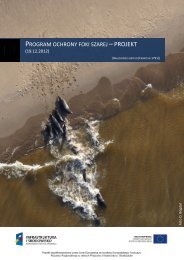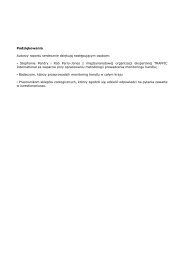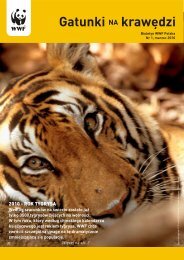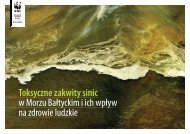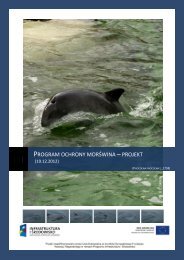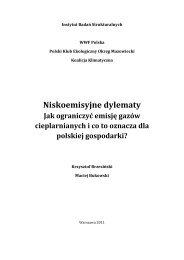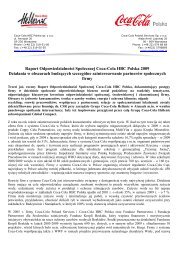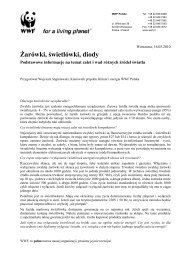COLLECTING GHOST NETS IN THE BALTIC SEA - WWF
COLLECTING GHOST NETS IN THE BALTIC SEA - WWF
COLLECTING GHOST NETS IN THE BALTIC SEA - WWF
You also want an ePaper? Increase the reach of your titles
YUMPU automatically turns print PDFs into web optimized ePapers that Google loves.
3.4. Recommendations concerning<br />
the safety and efficiency of operations<br />
conducted by fishermen (retrieving<br />
ghost nets from the sea bottom)<br />
and by divers (on shipwrecks)<br />
The Polish team did not observe any dangerous<br />
situations significantly different from normal conditions<br />
of work on fishing vessels. However, the time<br />
taken to implement the retrieval technique varied<br />
from vessel to vessel, which may have been related<br />
to a number of factors, such as:<br />
• the captains’ and their crews’ knowledge<br />
of techniques and fishing grounds other than<br />
those used on a daily basis;<br />
• the specific nature of the fishing grounds where<br />
the operations of retrieving ghost nets were<br />
conducted (chiefly the type of sea floor and the<br />
presence of wrecks, but also navigation<br />
restraints related to the presence of sailing<br />
routes, the fishing gear set in a particular area,<br />
currents and the depth at which the ghost nets<br />
were found).<br />
Practical recommendations put forward by the<br />
Lithuanian partners:<br />
• operations should be conducted in April and<br />
May, when underwater visibility is far better than<br />
during the summer;<br />
• for diving operations at depths exceeding 20 m<br />
it is recommended to use diving equipment<br />
feeding the air directly from the surface to<br />
extend the time that can be spent underwater;<br />
• it is necessary to use plumbing tools for cutting<br />
steel ropes and other specialist equipment for<br />
underwater work.<br />
3.5. Conclusions and recommendations<br />
arising from the comparison of<br />
operations in Lithuania and Poland<br />
The activities of the Polish and Lithuanian teams<br />
were conducted in specific conditions due to the<br />
character of waters and sea bottom in Polish and<br />
Lithuanian zones (Figure 2 – the Lithuanian zone<br />
with depth contours), intensity of use of living<br />
resources, different fishing traditions and a number<br />
of other factors.<br />
© <strong>WWF</strong> / Cz. Krewski<br />
20 <strong>COLLECT<strong>IN</strong>G</strong> <strong>GHOST</strong> <strong>NETS</strong> <strong>IN</strong> <strong>THE</strong> <strong>BALTIC</strong> <strong>SEA</strong>



